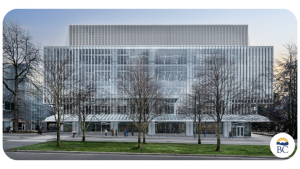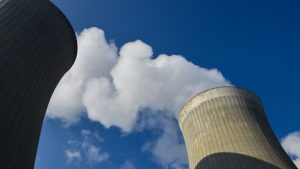Engineers at the University of British Columbia (UBC) have developed a new water treatment that removes “forever chemicals” from drinking water safely, efficiently and for good.
UBC chemical and biological engineering professor Dr. Madjid Mohseni, who developed the technology, likens the treatment to a Brita filter, “but a thousand times better.”
The chemicals in question are PFOA (perfluorooctanoic acid) and PFOS (perfluorooctane sulfonate), sometimes collectively called PFAS.
Used for decades to make such consumer and industrial products as non-stick and waterproof coatings, firefighting foams and food packaging, these otherwise useful chemicals have been linked to some serious health conditions.
“PFAS don’t degrade naturally and they last for a long time,” says Mohseni. “That’s why they’ve been called forever chemicals.”
The chemicals can find their way into water systems and from there into drinking water and into our bodies. Once inside us, they can accumulate and interfere with the natural functioning of some of our organs.
Researchers point the finger at the chemicals for a wide range of health problems, such as hormonal disruption, cardiovascular disease, developmental delays and even cancer.
“Almost of us have at least some PFAS in our bodies,” says Mohseni.
Although PFAS are no longer manufactured in Canada or the U.S., they are still produced in other countries and imported to North America in consumer products.
To remove PFAS from drinking water, Mohseni and his team of 12 graduate students and post-doctoral fellows, created filters made of polymers and nano-materials that are a step up from the technologies that are currently on the market.
These treatments, such as activated carbon and ion-exchange systems, can’t capture all the different PFAS.
They also release the trapped PFAS back into the environment as toxic solid waste and from there into the water system.
The Mohseni lab’s technology, on the other hand, can trap and hold all the forever chemicals that are present in the water supply.
And, after they have been trapped, the PFAS are destroyed by another proprietary technology. The new treatment can also recycle and reuse the trapped chemicals.
“The filters we have been developing are more efficient,” says Mohseni. “They can process more water and, at the same time, trap more PFAS.”
The Mohseni lab has also been developing clean water technologies for rural, remote and Indigenous communities.
The filters are particularly effective for people living in non-urban areas who lack the resources to get the most advanced treatments that could capture PFAS, says Mohseni.
“Our lab is piloting the new technology at a contaminated site in B.C.,” he says. “When that pilot has been completed, we plan to do two more of them soon afterward, in B.C. and Quebec.”
Mohseni says the results the lab obtains from the field studies will enable it to beef up the technology so that one day it will be available as a commercial product that municipalities, industry and even people at home can use to eliminate PFAS in their water.
In addition to his duties at the UBC lab, Mohseni is scientific director of the RESEAU Centre for Mobilizing Innovation, which works with rural and Indigenous communities to develop solutions for their water-related health challenges.
Mohseni and the rest of the RESEAU team have created what it calls a community-driven and collaborative problem-solving approach known as Community Circle to bringing practical drinking water solutions to Canadian rural communities.
Recently RESEAU and UBC’s faculty of applied science installed a water treatment system that combines ultraviolet light and chlorine disinfection to deliver clean drinking water to the remote Lhoosk’uz Dené community, a village of about 50 people in the central interior of B.C.
The treatment system is sufficiently simple that it can be operated, maintained and even repaired without relying heavily on the skills of expensive specialists or pricey components.
Mohseni says past water treatment facilities for other remote communities have failed for a variety of reasons.
Sometimes the system was too complex for a small community to operate. Other systems were too big for local conditions.
“The sheer diversity of remote communities means there is no one-size-fits-all solution,” says Mohseni. “More than six million Canadians living in Indigenous and rural communities do not have access to reliable clean water to drink, which is a necessity.”











Recent Comments
comments for this post are closed